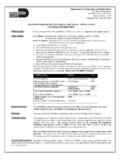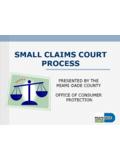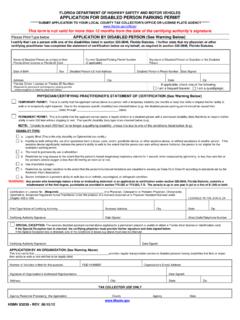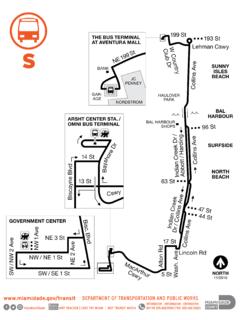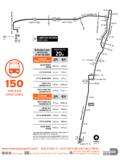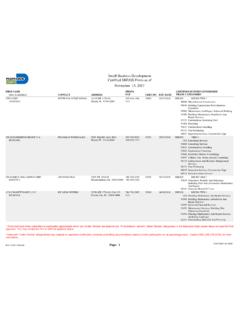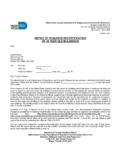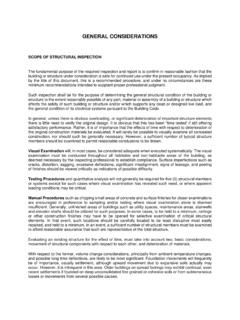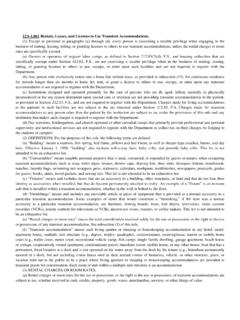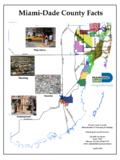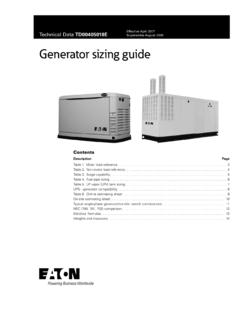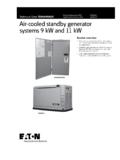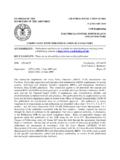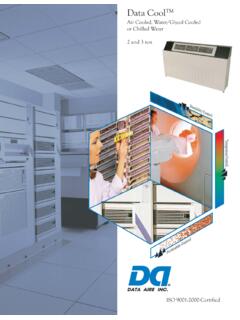Transcription of MIAMI-DADE COUNTY CHECKLIST FOR …
1 Page 1 of 5 \\miamidade\nas1\mdpic\CPBC\FILESERVER\I NFO&COMM\WEB UPDATES to CIAO\Generator check list-Revisions MIAMI-DADE COUNTY CHECKLIST FOR PERMANENT INSTALLATION OF generators This permitting CHECKLIST is for the permanent installation of stand-alone generators to be utilized to power residential or commercial structures during power outages. The generators typically use gasoline, liquid petroleum, natural gas or diesel fuel. This CHECKLIST outlines requirements to be submitted at the time of permit application for properties located within the unincorporated area of MIAMI-DADE COUNTY . If your property is located within a city, please contact your municipal Building Department. General requirements Completed permit application with the notarized signatures of the property owner and qualifying agent.
2 Completed electrical fee sheet for category 38 fee code G012. Signed, sealed and dated plans prepared by design professional. The electrical plans may be prepared by a licensed contractor. The electrical qualifier s notarized signature must appear on all electrical pages. Site plan indicating location of proposed generator and any associated permanent fuel tank(s) with the distances to existing buildings, and to property lines. Building requirements Electrical Location of electrical panel and transfer switch on site plan. Gas pipe bonding per National Electrical Code (NEC) (B) Connection between the generator frame and ground rod when provided Generator specifications. Connected load, size of conduit, conductors, over current protection devices and switches. Generator one line diagram.
3 Identify transfer switching as separately or not separately derived . Mechanical Location of the generator exhaust with respect to exterior wall openings in the building. The generator exhaust shall be located 10 feet away from wall openings such as windows, doors, exhaust fans, appliance vents, etc. in accordance with the requirements of the Florida Residential Code, Section or for commercial generators see the Florida Mechanical Code, Section Plumbing/Gas (for propane and natural gas) When the source of fuel is natural gas, location of natural gas meter on site plan. When the source of fuel is propane gas, the location of containers shall comply with the minimum separation distances to other containers, buildings, property lines and sources of ignition established by Tables , , and Sections through of the National Fire Protection Association (NFPA) 58.
4 Page 2 of 5 \\miamidade\nas1\mdpic\CPBC\FILESERVER\I NFO&COMM\WEB UPDATES to CIAO\Generator check list-Revisions Location of water, sewer, well, and interceptors on site plan. Gas piping diagram shall include the following information: 1. Isometric of piping layout. 2. Longest run of gas pipe (from source to farthest outlet). 3. Pipe sizes(s). 4. Appliance(s) BTU output. 5. Type of materials used-gas table used from minimum sizing Structural (Generator Pads) Nature of soil and allowable soil bearing capacity. Florida Building Code (FBC) Section and Generator pad size, thickness and reinforcement Generator anchoring detail For generators utilized to power commercial properties only, one field density test required, to be provided at the time of inspection to verify a minimum of 95% of maximum dry density.
5 FBC Section Zoning requirements Effective June 19th, 2006, permanent generators fueled by propane gas or natural gas not exceeding five (5) feet in height from finished grade to the top of the generator shall be permitted as an accessory use in certain residential districts and shall meet the following setbacks: 1. Front behind the front building line 2. Rear five (5) feet 3. Interior side three (3) feet in RU (Residential) districts, five (5) feet in EU (Estate), AU (Agriculture) and GU (Interim) districts. 4. Side Street behind the side street building line, unless completely screened from view by a wall or hedge. In no event shall a permanent installed generator be placed closer than ten (10) feet to the side street property line. 5. Spacing there shall be no spacing requirements between the principal building and the permanently installed generator.
6 In all residential districts, a permanent generator shall be screened from view by a wall or hedge, Section (d). For the location of a commercial generator, please refer to Chapter 33-51 of the Code of MIAMI-DADE COUNTY for minimum setback distances for business and industrial zoning districts, excluding IU-C (see 33-273 for IU-C setback requirements). There is no minimum spacing required between buildings. For further information, please contact the Zoning Information Section at (305) 375-1806/1807 or the Zoning Permit Section at (786) 315-2660. Page 3 of 5 \\miamidade\nas1\mdpic\CPBC\FILESERVER\I NFO&COMM\WEB UPDATES to CIAO\Generator check list-Revisions Division of Environmental Resource management (DERM) DERM plan review and approval is required for all Aboveground Storage Tanks (ASTs) and Underground Storage Tanks (USTs).
7 GENERAL REQUIREMENTS: New UST systems for fuel are required to have double wall construction, overfill prevention, overspill protection, tank interstitial monitoring, continuous automatic leak detection, anchoring, monitoring well network, protection from corrosion, etc. The components of the system must be on the approved state list. New AST systems for fuel require; secondary containment (double wall construction or spill containment dike), overfill prevention, overspill protection, tank interstitial monitoring, continuous automatic leak detection, anchoring, etc. Generator and fuel supply (excluding gas powered systems) shall be located a minimum of 100 feet from any potable water supply wells. Plans must provide a title block to be signed, sealed and dated by a Professional Engineer registered in the State of Florida, and a title block to be signed and dated by a Pollutant System Specialty Contractor (PSSC).
8 Additionally, plans must show: o A location map, site plan, and/or floor plan showing locations water supply and wastewater systems o Size, design (double walled vs. single walled), material of construction and location (underground vs. above ground) of the fuel tank and type of fuel to power the generator. o Fuel piping layout in plan and profile (cross section showing piping running underground or above ground) of the entire piping running, showing all STP, fuel pumps, piping sumps, piping design ( double walled vs. single walled), material, support and slope of the piping. o Compliance monitoring well (MW) network and MW detail(s). o Fuel tank pad and anchoring details or anti-buoyancy calculations. o All electrical/mechanical equipment (including the generator, remote fill ports, top of tank, etc.)
9 Must be above the Base Flood Elevation and/or the required lowest floor elevation. Any system with a sub-base tank below the required elevations must show that it is resistant to floodwaters, hydrostatic, hydrodynamic, and buoyancy forces; system must also show that the top of tank, fill port as well as any equipment related to the system is above the required elevation. Page 4 of 5 \\miamidade\nas1\mdpic\CPBC\FILESERVER\I NFO&COMM\WEB UPDATES to CIAO\Generator check list-Revisions o Required elevations shall conform to Chapter 11C-3(m) of the dade COUNTY Codes (must be a minimum of 4 if commercial and 8 if residential above the COUNTY Flood Criteria (CFC) and 4 /8 above the Back of Sidewalk and Crown of Road fronting the property, whichever is higher. Said elevations must also comply with the Florida Building Code (FBC Building) must be 1 ft.)
10 Above BFE if Category II or III structure and must be 2 ft. above BFE if category IV structure (FBC ). Residential generators must be at or above the BFE (FBC Residential ). SPECIFIC RESIDENTIAL REQUIREMENTS Only UST systems for fuel greater than 300 gallons are required to have double wall construction, overfill prevention, overspill protection, tank interstitial monitoring, continuous automatic leak detection, anchoring, monitoring well network, protection from corrosion, etc. The components of the system must be on the approved state list. A Pollutant System Specialty Contractor (PSSC) is only needed to sign and date plans for installation of underground fuel tanks greater than 300 gallons and/or any underground fuel piping. The required lowest floor elevation for residential construction is the highest of the Base Flood Elevation or Crown of Road/ COUNTY Flood Criteria plus 8 inches.
